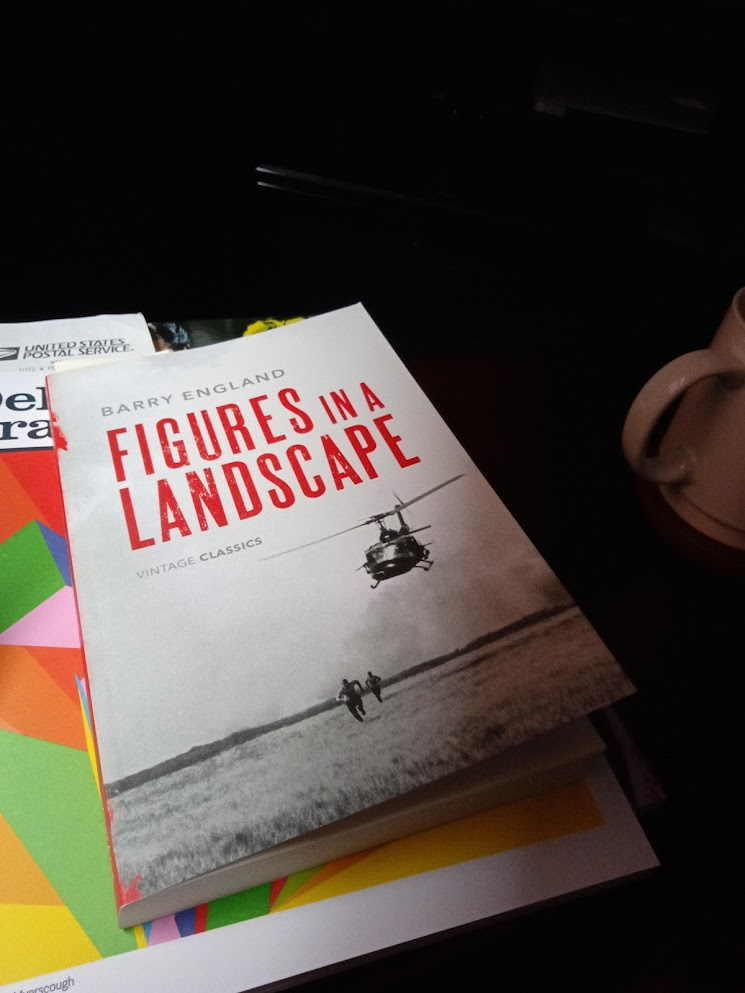
I finished the novel Figures in a Landscape by Barry England back in 2021 and was captivated throughout. In the story, two men escape from war-time imprisonment and flee across a spare landscape pursued by their previous captors. The younger of the two is the more innocent Ansell, and the older is the callused fighter MacConnachie. The novel, from 1968, has no specifics about who the antagonists were or where the action occurs.
England’s book was a pure and existentialist response to sentiments the late 60s regarding war and the value we put on life, ours and others, and how proximity affects that value. What he wrote transcends the specificity of the events contained; the detailed and exposed psychology of the duo in flight contrasts the ambiguous landscapes. I think of it, imprecisely, as a more “human” companion to Waiting for Godot. Bleak humanism?
I read the book several times and annotated the events and days (approximately 11) when those events occurred, converting what I felt were key moments into specific movements. They are:
- march
- village I
- helicopter I
- crawl I
- fire
- boat
- mountain I
- village II
- mountain II
- rain
- fissure
- crawl II
- helicopter II
- “we’d never have got”
The movements are generally grouped in threes, with #13 and #14 standalone.
(written from 16 May 2022 to 3 Feb 2024)
